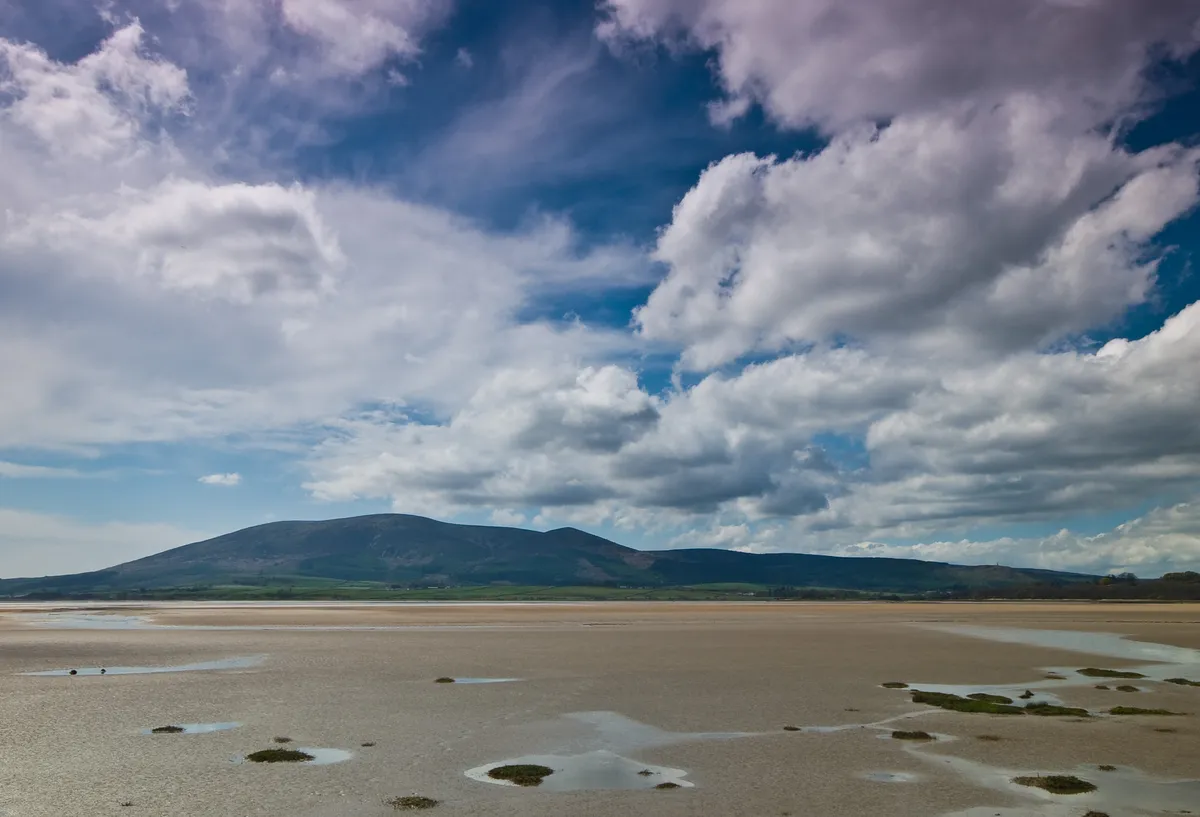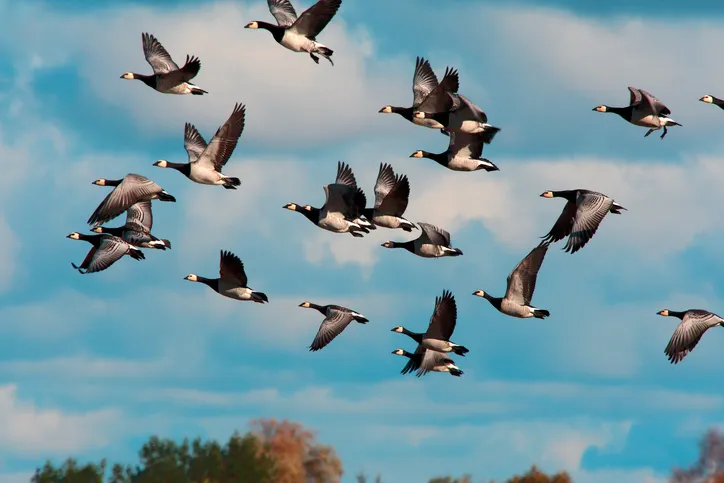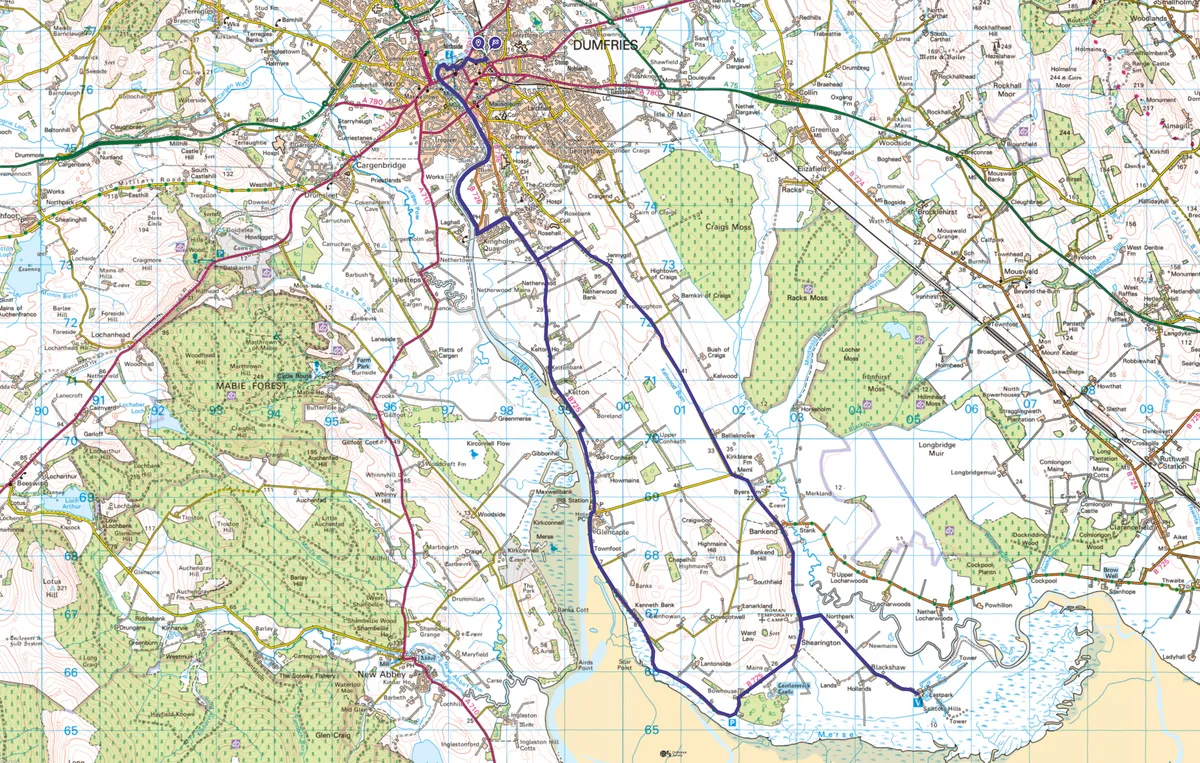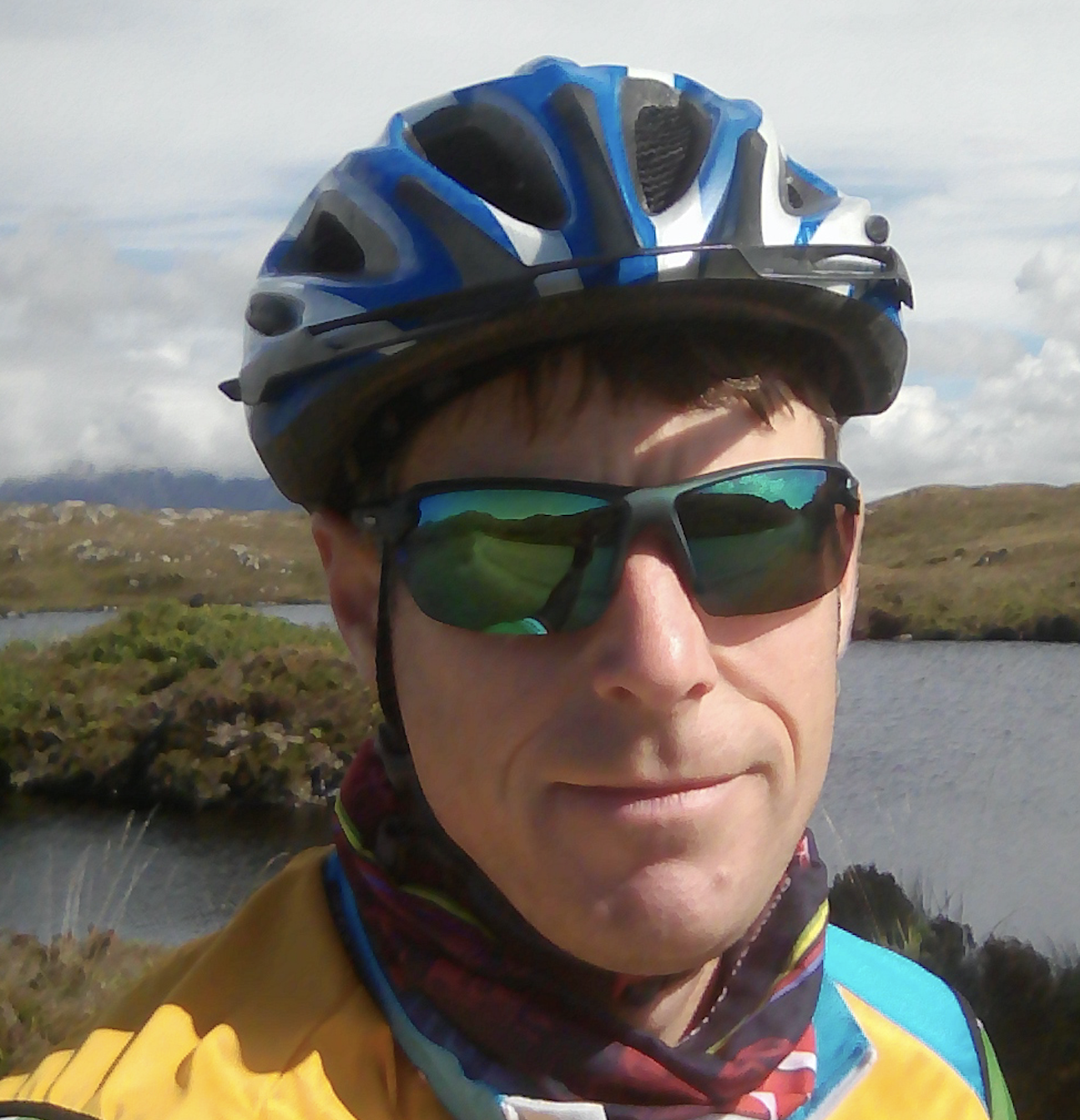There are thousands of excellent sites around the UK for autumn birdwatching. Knots from Canada can be seen at Blakeney Point in Norfolk; short-eared owls from Scandinavia at Wicken Fen in Cambridgeshire; and hen harriers at Burton Mere in Cheshire.
But for sheer abundance and drama, one of the very best spectacles is the autumn arrival of pink-footed and barnacle geese at Caerlaverock on the Solway Firth in south-west Scotland.

Visiting Caerlaverock
Caerlaverock National Nature Reserve (NNR) stretches for 10 miles along the north coast of the Solway Firth in Dumfries and Galloway. This estuarine area of mudflats, sandbanks and saltmarsh, or merse, is a haven for wildlife. Thousands of waders and wildfowl descend here in the autumn, including the entire Svalbard barnacle goose population, to overwinter and feed on the expansive marshes, tidal pools and excellent grazing land.
A 10,000-strong flock of pink-footed geese may be seen alongside overwintering whooper swans, Bewick’s swans and regulars like shelduck, pintail and golden eye. It’s a mesmerising place at dusk and dawn, wrapped in an autumn mist, and with views to the granite dome of Criffel.

Birdwatchers should visit the Caerlaverock Wildfowl and Wetland Trust (WWT) reserve beside the NNR. This boasts two observatories, two viewing towers (one with giant binoculars) and three large log hides on the 1,400-acre site.
All 10 WWT centres in the UK exist to fulfil founder Peter Scott’s vision of connecting people with nature and are accessible to everyone. Flat, wide avenues lead to the Caerlaverock hides and wheelchairs are available to hire. Tea, coffee and snacks are available, too. And there are picnic tables where you can bring your own food.

Caerlaverock bike ride
23 miles/37.1km | 4–5 hours | moderate
An interesting and peaceful 23-mile cycle can be taken to the WWT centre. Along the way, you will pedal beside the sweeping River Nith before arriving at a formidable medieval castle.
1. To the river
From Dumfries train station, head west along Lovers’ Walk for about 300m to meet Edinburgh Road. Turn left and pedal on to take the first right on to Irving Street. Now away from the main roads, turn left onto George Street, then shortly after take a right onto Nith Avenue, which leads on to Burns Walk. Here you will pass sites linked to the poet Robert Burns, who spent the last years of his life in Dumfries.
Cycle downstream to join an excellent cyclepath beside the wide, tidal River Nith, and simply follow this onwards. This part of National Route 7 leads through Dock Park, where the coppery gold and red hues of the beech and acer leaves are stunning.
2. Striking south
Further on, the Sustrans route leads by tiny Kingholm Quay. A landing place has existed here since 1707 and in the mid-18th century a quay was built when it was part of the port of Dumfries.
An on-road climb then leads to a roundabout, and a quiet (outwith rush hour) B-road.
The cycling remains nigh-on perfect beyond Glencaple with views across the mudflats and merse to Airds Point and Criffel. Old oaks dotted by the roadside wear their October finery.
3. Fabulous fort
Caerlaverock Castle (access restrictions currently in place) soon appears by a bend in the road. This well-preserved, partially ruined, sandstone fortress is unique in being triangular and moat ringed. Naturally, lying so close to the English border, it had a beleaguered history; it was barely complete when it was successfully besieged by Edward I. Autumn colours brighten the coppiced oaks in adjacent Caerlaverock Wood.

4. Brilliant birds
Continuing inland, turn right at the sign for the Caerlaverock WWT centre at Eastpark. Cyclists get a 15% discount on the entrance fee.
From early October, the barnacle geese, affectionately known as ‘barnies’, arrive. As many as 40,000 birds overwinter here – testament to a WWT-led conservation programme that has seen the population recover from a mere 400 in the 1940s.
But, last year, bird flu killed between a quarter and a third of the population, and staff will be anxiously counting their numbers.
5. Back to Dumfries
The return leads uphill to Bankend. Follow the road for Dumfries and, after descending from its scenic high point, turn left down the unmarked Stanehouse Loaning (if you reach a speed limit sign, you have overshot this road) to rejoin the outward route back to Dumfries.
Caerlaverock map
Dumfries to Caerlaverock cycling route and map

